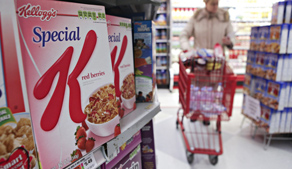 NEW DELHI: Reflecting changes in the dietary habits, a government survey has found that the share of protein-rich cereals in food has declined but oil and fat intake has gone up in both urban and rural households.
NEW DELHI: Reflecting changes in the dietary habits, a government survey has found that the share of protein-rich cereals in food has declined but oil and fat intake has gone up in both urban and rural households.
“Over the 18-year period from 1993-94 to 2011-12, the share of cereals in total calorie intake has declined by nearly 10 percentage points in the rural sector and nearly 7 percentage points in the urban,” said National Sample Survey (NSS) on Nutritional Intake in India in 2011-12.
It further said the share of oil and fats has risen by about three-and-a-half percentage points each in both cities and villages.
The calorie consumption regained the level of about 2,100 Kcal per person per day in rural areas and about 2,060 Kcal in cities in 2011-12.
The survey said a rise in average calorie intake between 2004-05 and 2011-12 is noted in rural areas of most of the major states.
In villages, protein intake per person per day has definitely declined since 1993-94. However, the decline at the all-India level shows signs of flattening out, being only 0.5 gm less in 2011-12 compared to 2004-05.
The decline in rural protein intake since 1993-94 has been prominent in Rajasthan (a fall of 11gm), Haryana (about 10gm), and Punjab (8gm).
In cites, the decline in protein intake between 1993-94 and 2011-12 is less marked than in villages. In cities and villages, all the southern states except Karnataka show a slight increase in protein intake per person during this period.
According to the survey, a rising trend in per capita fat intake is visible not only at all-India level but in every major state.
In villages, the rise in fat intake has been from 31.4gm per day in 1993-94 to 41.6gm in 2011-12 and in cities, from 42.0gm to 52.5gm – a rise of over 10gm in both areas.
Across the country, all the major states show a rise in fat intake ranging from 5-6gm to 17-18gm during this period.
Over 18 years preceding 2011-12, the contribution of cereals to protein intake has fallen by about 7 percentage points in rural areas and nearly 6 percentage points in cities. -PTI






